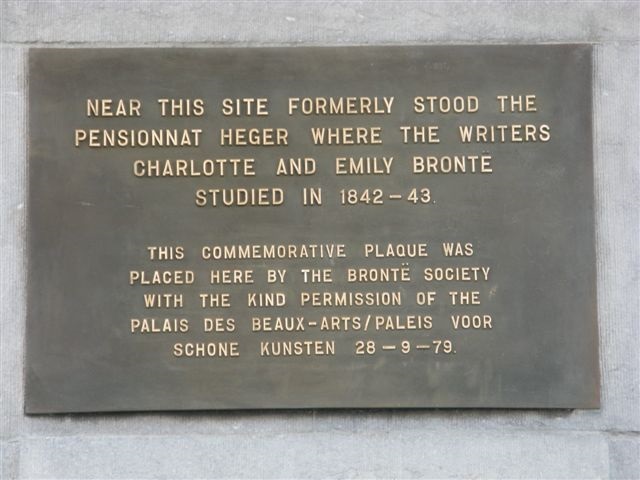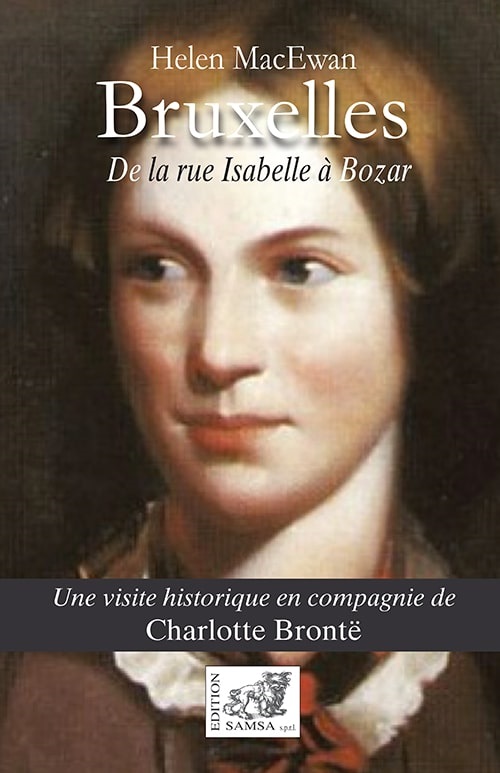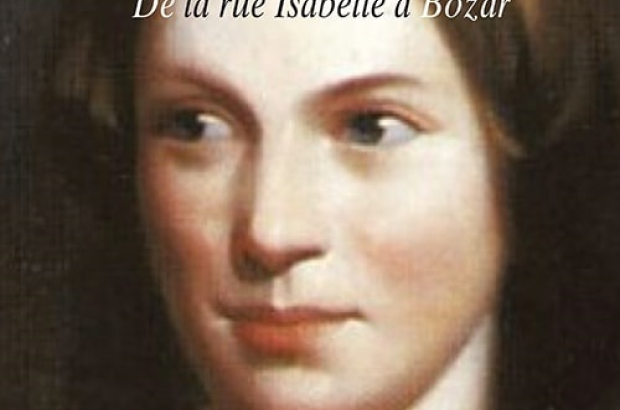- Daily & Weekly newsletters
- Buy & download The Bulletin
- Comment on our articles
The Brontës, Brussels and Bozar: Brussels author Helen MacEwan explores the city through the prism of Charlotte Brontë’s ‘Villette’
2025 is Art Deco year, and among other architectural jewels Brussels will be celebrating Victor Horta’s Palais des Beaux-Arts, ‘Bozar’.
The building, created in the Art Deco style Horta embraced when Art Nouveau fell out of favour, is a testament to his genius. But for years I have been celebrating an aspect of Horta’s arts centre that has nothing to do with its architecture or the events it hosts. My personal fascination is in the literary association of the site it occupies.
Shortly after moving to Brussels in 2004, I reread Charlotte Brontë’s Villette and then started reading about the Brontës. I learned that the school minutely described in the novel is closely based on the Pensionnat Heger in the Rue Isabelle, the boarding school where Charlotte spent two years studying French and teaching English — accompanied, at first, by her sister Emily. ‘Villette’ is her fictional name for Brussels. Lucy Snowe, the book’s heroine, falls in love with a colleague inspired by Constantin Heger, the husband of the school’s directress, to whom Charlotte developed an obsessive devotion.
Soon I, too, was obsessed. Not with Monsieur Heger, but with finding out about Charlotte’s time in Brussels. I learned that the Pensionnat, sadly for literary tourists, disappeared in 1910 along with most of the Quartier Isabelle. Horta’s Bozar now stands on the site of its walled garden; part of the school premises also lie buried under rue Baron Horta and the Fortis bank building.

So it was not long before I found myself gazing up at the plaque commemorating Charlotte and Emily’s stay, placed to the left of the entrance to Bozar, too high to be easily spotted. I tried to imagine the area as it was in the Brontës’ day — not easy since it was completely redeveloped at a higher level. But not everything has vanished. If you descend some steps at one side of Bozar you can stand deep down in the Rue Terarken, or what survives of it. This tiny, forgotten street used to run into Rue Isabelle.
In the 20 years since my first sight of the plaque I have been walking in Charlotte Brontë’s footsteps in Brussels. I have pored over old photos of the Pensionnat Heger and the Isabelle quarter, written books about Charlotte’s stay in the city and her legacy here, obsessed over these things in cafés and taverns with fellow enthusiasts and, with some of them, founded a literary society that organises talks and guided walks, the Brussels Brontë Group.
Villette, Brontë’s last novel, is considered by many critics her most interesting. I leave literary criticism to others. My own exploration has been of the ways in which the book reflects her experience of Brussels, as an expat before me. How accurate an observer was she? The desire to know led me to spend hours in the Royal Library next to the Chapelle Royale where she worshipped, reading about the city she knew.

To understand her Brussels, I needed to know something of its history. The Rue Isabelle where she lived, a quiet backwater by her time, had been the scene of court processions in the days of the Archduchess Isabella. The Spanish ruler created it as a route to the cathedral from the Coudenberg. The Chapelle Royale attended by Charlotte was part of the palace built by Charles of Lorraine, another popular Habsburg governor. Under French rule at the turn of the 19th century it was assigned to the Protestant community. The Protestant Leopold I, first King of the Belgians, worshipped there. Charlotte saw the King and his young son, the future Leopold II, at a concert and described them in Villette.
When guiding walks around the Royal Quarter I found that many participants seemed to know relatively little about the city where they lived. Thus was born the idea for a book that would be a selective stroll through three centuries of Brussels history, starting with Isabella and her street and ending with the destruction of the Isabelle quarter under Leopold II, the ‘builder king’ set on modernising the capital. Charlotte Brontë would be the guide, with quotations from her writings used to introduce historical personages, places and events.
The resulting book has just been published in French translation as Bruxelles: de la rue Isabelle à Bozar - Une visite historique en compagnie de Charlotte Brontë. It’s my tribute to Brussels, a city whose history I’ve come to know through a literary passion.
Helen MacEwan will be signing copies of the book at the Foire du Livre du Bruxelles on 13 March from 15.00-16.30.



















